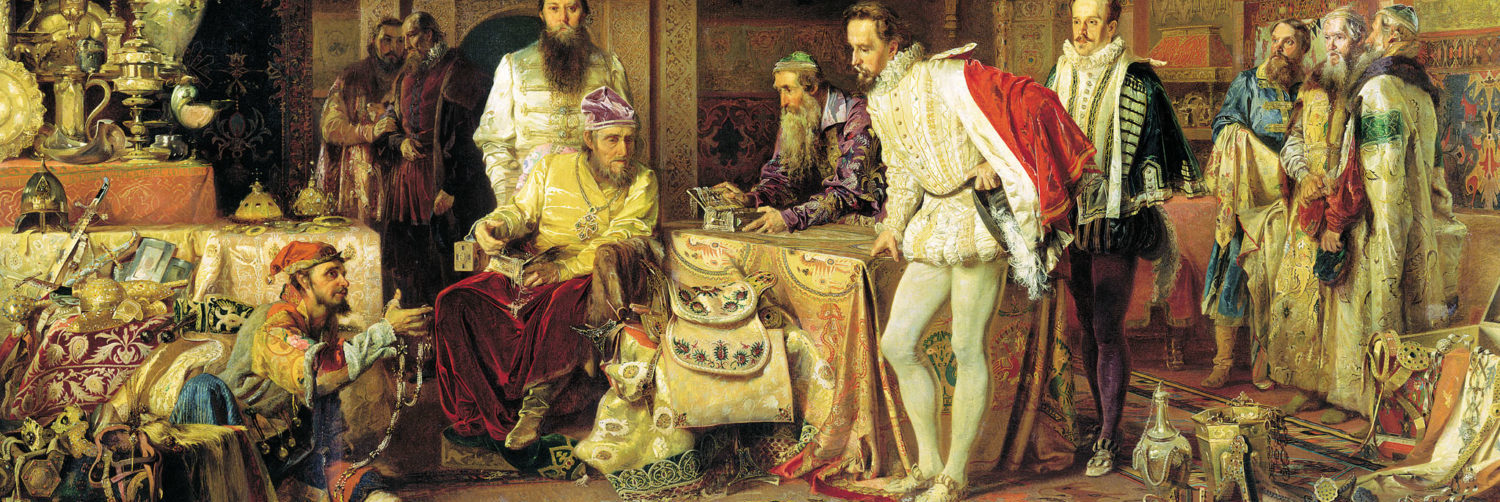My biography of Flannery O’Connor is titled The Terrible Speed of Mercy. I borrowed the phrase from O’Connor’s second novel, The Violent Bear It Away. I was always struck by that odd juxtaposition of terrible and mercy; I chewed on it for about twenty years, never suspecting that I would one day be able to use it as a book title.
The possibility of a terrible mercy obviously has a lot to say about Flannery O’Connor’s understanding of sin and grace and judgment, but it also points up a peculiar pattern in the development of the English language.
One of my favorite hymns begins,
How sweet and awful is the place
With Christ within the doors,
While everlasting love displays
The choicest of her stores.
Most hymnals change that first line to “How sweet and awesome is the place.” It doesn’t seem nice to describe Jesus as awful. Still, when you use the word awesome, you end up describing Jesus in terms one associates with The Lego Movie and the Teenage Mutant Ninja Turtles. You pick your poison, I suppose.
There was a time when either awful or awesome would have been an excellent choice for describing the Second Person of the Trinity. The words started out life as synonyms, meaning inspiring awe and reverential fear. The noun awehas mostly retained that tension between fear on the one hand and wonder or reverence on the other. Think of George W. Bush’s “shock and awe” campaign: neither “shocking and awful” or “shocking and awesome” would have the same effect.
Both awful and awesome have been affected by a phenomenon known as “semantic drift.” The meanings of words change over time. Consider how much the connotations of words like progressive and privilege have changed in just the last five or ten years. Semantic drift is a natural process and nothing to get too exercised about, though it is important to be aware of changes in meaning and to adjust your language accordingly.
The two most well-known (and easily illustrated) kinds of semantic drift are pejoration and amelioration. In pejoration, a word moves from positive or neutral connotations toward negative connotations (or even denotations). The word villain originally meant villager—or, more specifically, a villager of low rank. People of high rank took to using the term as an insult to other people of high rank, and eventually those negative connotations hardened into the definition (denotation) of villain as a person who is actively wicked rather than a person who happens to have been born to a low-ranking family in a small village.
Amelioration moves in the opposite direction: a neutral or negative word takes on positive connotations and/or denotations. Nice derives from the Latin nescius, “not knowing.” When it first came into English it meant foolish. Through an interesting, long process (too long to detail here), nice took on the more positive connotations that it has now—though, as compliments go, nice is a pretty one. Its history helps explain why.
Awful, then, seems to be a clear case of pejoration. I have already mentioned that the noun awe holds fear and wonder in tension. The world awful latched onto the fear side of that tension and went downhill from there. Awesome, on the other hand, attached itself to the wonder side of awe. So has awesomeundergone amelioration? I don’t know if this technically counts as amelioration or not. To go from being a complicated word used to describe God to being an uncomplicated word used to describe skateboard tricks doesn’t seem like a promotion to me.
Pejoration and amelioration aside, the most significant drift for both awful and awesome has been the drift from specific to general. Both words meant something pretty specific in the early eighteenth century, when Isaac Watts wrote “How Sweet and Awful Is the Place.” Now, awesome means little more than “really good,” and awful means little more than “really bad” (except when it, too, means “really good,” as in “It’s awfully nice to meet you”). So if you’re a hymnal-editor, your real problem here isn’t so much the pejoration of awful as the drift of both awful and awesome toward non-specificity.
There’s a whole constellation of fear-related words that have undergone this “semantic bleaching,” as it’s called. Some, like awful, have drifted to mean “really bad in a non-specific way,” and some, like awesome, have drifted to mean “really good in a non-specific way.”
Terrible used to mean “evoking terror.” Horrible used to mean “evoking horror.” These two synonyms both drifted pretty far, but they still remain synonyms in their reduced circumstances, like immigrants who were neighbors in the old country but now find themselves living in the same tenement building in Queens.
The story of horrible/horror/horrendous is interesting, by the way. The Latin root horrere literally means to shudder or to bristle or to stand on end. So a horror is a thing that makes your hair stand on end. The word abhor derives from the same root: ab (away from) + horrere. When you abhor a thing, you turn away and shudder (though from loathing rather than from fear). And if you want a fancy way to say “getting goosebumps,” horripilation is the word you’re looking for.
Besides awesome, fear-related words that now mean “really good” include tremendous (literally, “causing trembling or tremors”) and stupendous (literally, “causing one to go into a stupor”). Astounding and astonishing also fall into this category. They derive from the Latin tonare, “to thunder” (ex + tonare —> astonie —> astonish/astound). So to be astonished or astounded (or, for that matter, stunned, which comes from the same source) is literally to be thunder-struck.
In most of these examples, semantic drift has been a linguistic impoverishment, moving from the specific toward the general and non-specific. But semantic drift isn’t necessarily a bad thing. It’s just a thing; it happens. Sometimes semantic drift enriches the language.
Consider what happened to the word awe. In the earliest written instances, awesimply means fear in a general sense. You might have felt awe right before the dog bit you. But thanks to semantic drift, the word awe took on the specific, complex, even theological sense of that particular fear that is connected to wonder and reverence. Awe drifted to fill a gap in the language—to put a word to a feeling that we all know but can’t quite explain.
John Ruskin, by the way, offers a helpful definition of awe in his book, Modern Painters: “It is possible to conceive of terribleness without being in a position obnoxious to the danger of it, and so without fear; and the feeling arising from this contemplation of dreadfulness, ourselves being in safety, is properly called awe.”
To contemplate dread, ourselves being in safety—that explains the appeal of a lot of our favorite stories, doesn’t it? For that matter, it also explains the appeal of roller coasters and alligator farms.
Image: Ivan the Terrible shows his treasures to the English ambassador Horsey, by Alexander Litovchenko – [1] originally uploaded to Wikipedia by Ghirlandajo on 2 February 2005, Public Domain, https://commons.wikimedia.org/w/index.php?curid=3186489








